

Business Development
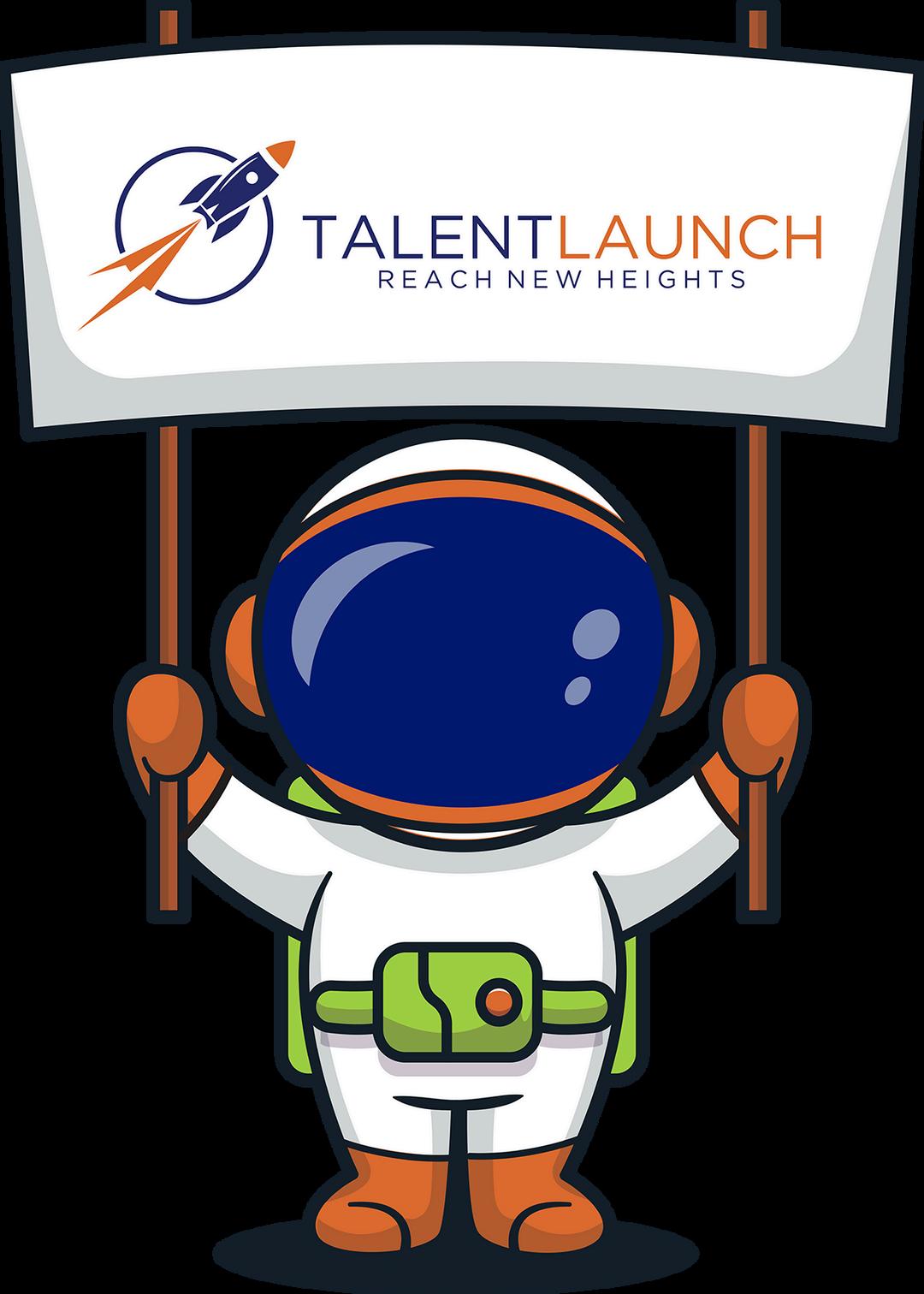
Last Edited: October 2024
Prepared & Maintained by: Quality Management System (QMS)
Introduction
Peformance & Analytics
Metrics to Track, Outcomes, Effort
Using Data to Drive Your Day
Prospecting & Lead Generation
Identifying Potential Clients
Effective Outreach Strategies
Sales & Relationship Building
Sales Techniques
Initial Client Visit
Client Needs Assessment
Proposal & Presentation
Effective Proposals
Presentation Skills
Pricing
Negotiation & Closing Deals
Techniques
Closing Strategies
Service Delivery & Handoff
Onboarding Clients
A+ Service Delivery
Continuous Improvement
Appendices
Templates & Forms
Glossary




I N T R O D U C T I O N
Welcome to the New Business (Sales) Rocket Guide!
This manual is designed to be your ultimate resource for navigating the exciting world of business development in the staffing industry.
Whether you are a new hire or a seasoned professional, this guide will provide you with the essential tools, strategies, and insights needed to excel in your role.

Significance in the Staffing Industry
Business development in the staffing industry refers to the process of identifying, attracting, and acquiring new clients to whom your OC will provide staffing solutions It is a critical function that drives revenue growth, expands market reach, and enhances the firm's competitive edge. Effective business development involves a blend of sales, marketing, and strategic planning to meet the ever-evolving needs of clients and the market.
Place on the Team

Business Development generates the new business, checking into the leads provided by the team and which they find themselves; Managing Prospects in their funnel to sign as many as possible to grow the business in a Practice Area
Client Management manages a portfolio of Client accounts to expand them through long-term business relationship, as well as managing on assignment Talent Working on their Client accounts
Recruitment manages a candidate funnel of various skills, tenure, and abilities to provide the team with a variety of options for the different Client accounts in a Practice Area, collecting leads for expansion and sales along the way
Key Phases Overview & Strategies
1.
Prospecting and Lead Generation
Identifying potential clients through market research and networking
Utilizing digital tools and platforms to generate leads.
2.
Initial Contact and Relationship Building
Making initial contact with prospective clients through various channels.
Building and nurturing relationships through consistent and meaningful interactions.
3.
Needs Assessment and Solution Development
Conducting thorough needs assessments to understand client requirements.
Developing tailored staffing solutions to meet specific client needs.
4.
Proposal and Negotiation
Crafting compelling proposals that highlight the value of your services.
Negotiating terms and closing deals to secure new business.
5
Implementation and Follow-Up
Ensuring successful implementation of staffing solutions.
Maintaining ongoing communication to ensure client satisfaction and identify further opportunities.
By mastering these phases and implementing the strategies outlined in this guide, you will be wellequipped to drive new business development and contribute significantly to the success of your firm in the staffing industry.
Active Learning
CEO Aaron Grossman showcases key lessons learned along his professional journey in a series called Tidbit Tuesdays. This weekly series highlights techniques from Sales to Recruiting to Client expansion
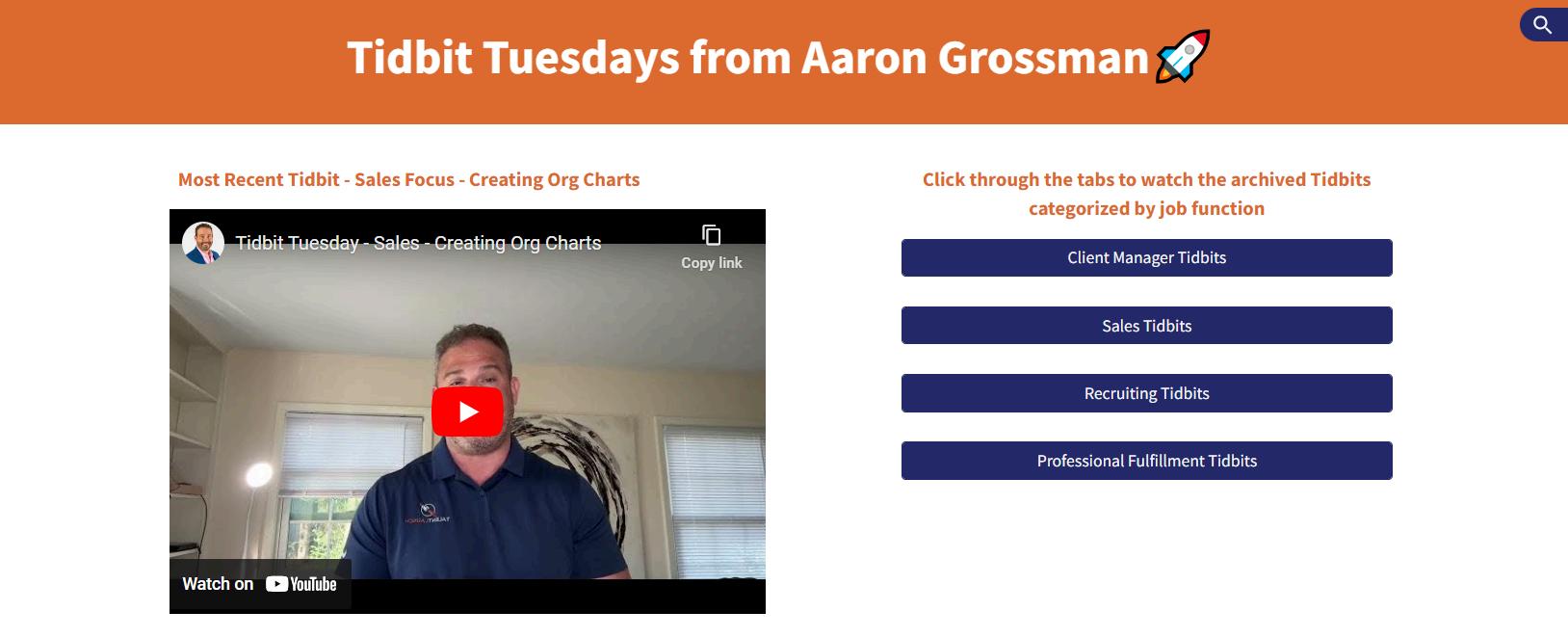
Click the button to check out the Tidbit Tuesdays from all phases, by Aaron Grossman!
TalentLaunch Go! Is our learning platform for new hires and current employees seeking to build their foundational soft skill sets in their role. TLG is broken into phases with each topic being a skillset to learn within the phase.
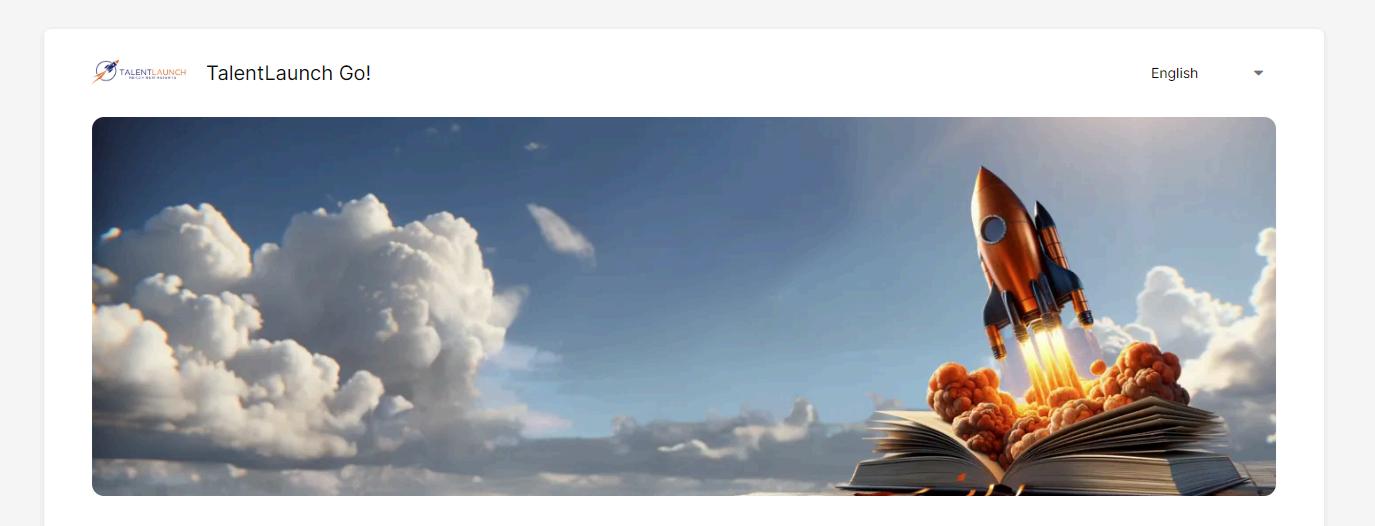
Click the button to check out the Learner Guides to walk through what is covered in each topic!




P E R F O R M A N C E & A N A L Y T I C S
Metrics, Outcomes, Effort
At TalentLaunch, we track the following Key Performance Indicators (KPIs) that have been proven, when executed correctly, to lead to success. These KPIs will provide valuable insights into the effectiveness of your recruiting strategies and help you identify areas for improvement. Below are the key metrics to track:
Talent Connects
Importance: More touchpoints with potential Talent can boost conversion rates and strengthen relationships Live connections are crucial for building rapport and trust, providing immediate feedback and dynamic conversations that ultimately nurture the candidates in your database
Internal Submissions
Importance: First impressions are crucial, and a strong submission can significantly improve the chances of candidate selection (and help your team run smoothly, wasting less of the CM/PL/BDM’s AND the talent’s time) These submissions provide an opportunity to present the best-suited candidates to CM/PL/BDM effectively. The faster and more accurate you make them, the faster the CM/PL/BDM can make a submission to the client and the faster a start can be made.
Starts
Importance: Successful candidate starts contribute directly to the firm's revenue growth and market expansion, validating the effectiveness of the recruitment strategy.

Using Data to Drive
We leverage Bullhorn (our Applicant Tracking System or ATS) as our one source of truth. It's critical that all contributors consistently input accurate data. The information in Bullhorn powers our marketing automation tools and feeds our business intelligence tool Power BI.
With the help of Power BI, we utilize our data to guide our strategies, decisions, and coaching. We offer specific reports to help recruiters understand how they are performing and where they can focus their efforts to drive revenue.
You can find the link in the Managed Bookmarks at the top left corner of your Google Chrome Internet Browser. Click


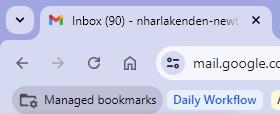

You can also easily view the skillsets and industries your practice area is staffing for by using PowerBI
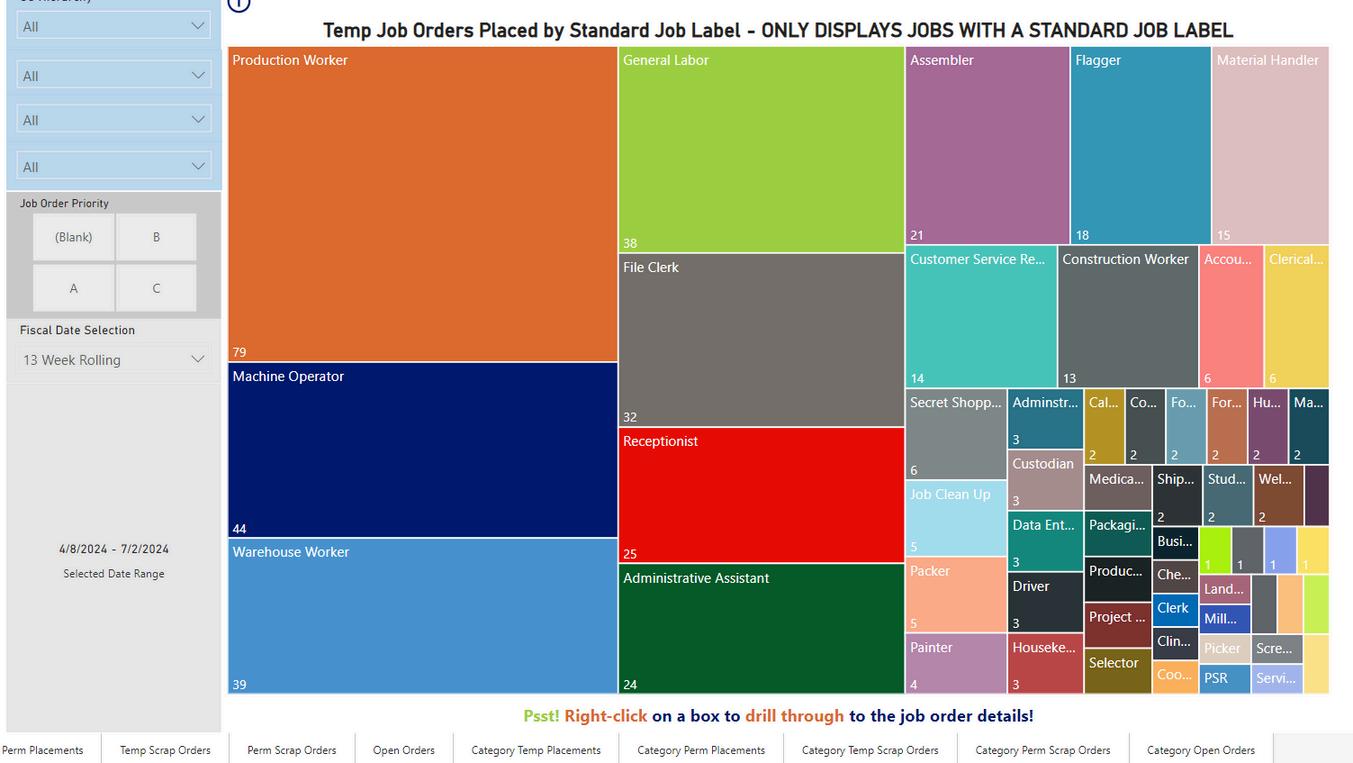
Remember that PowerBI is super powerful, so use the filters on the sides, an the tabs at the bottom to navigate and change your view.
Curious about what reports Senior Leadership looks at regularly?
Click the button to check out the Light Industrial Toolkit list on the Deb’s Desk page of the Intranet
Click the button to check out the PowerBI Reporting Guide on the Flight Deck

Sales Actionable Insights


The Sales Actionable Insights report in PowerBI helps you track your progress against your target company list See which prospects need outreach, prioritized by prospect rating (A/B/C), or when a target was last contacted. Click the button to check out the Sales Actionable Insights Dashboard







P R O S P E C T I N G & L E A D G E N
ID’ing Potential Clients
A marketing strategy is how you will reach your target audience, while a sales strategy is how you will convert them to customers.
Build
a Winning Database
The marketing strategy sets the direction to find and engage prospect customers so you can promote your core message and build interest in the brand.
Click the button to check out the Glossary on the Flight Deck to familiarize yourself with the standard vocabulary used in the Network
1. Market Strength
TalentLaunch provides membership to a number of staffing and employment resources. These illustrate the economic contribution of the industry at the state level. Need a login? Reach out to mbarnett@mytalentlaunch.com



Click the button to check out the ASA Individual State Fact Sheets
Click the button to check out the Bureau of Labor Statistics website for industry insights

Click the button to check out the Indeed.com Hiring Insights for your market
2. OC Strength
Where is your operating company strong? Thoroughly review your brand’s website by using your Managed Bookmarks:


Then schedule time with your manager and review the following:
WHO
Teammates
Ideal Targets
Top 10 Clients
Top 10 Competitors
Weekly Client billing list
WHERE

Clients in territory
Your branch in relation to majority of the associates
Public Transit lines & schedules
WHAT
Top 5-7 skill sets placed
Tenure: entry-level, skilled, or high-skilled roles
Geographic territory
Industry verticals
“Secret Sauce”
Competitors specialities/weaknesses
Titles of decisionmakers to target at prospects
Activity expectation
Be sure to check out your OC’s brand page on the intranet and your brand marketing resources as well!
Click the button to check out your OC’s page on the Intranet; More coming soon!
Click the button to check out the Marketing Toolkit on the Marketing Intranet page -customized for your brand!
3. Your Competition
The benefits of knowing our competition are endless. Understanding who they are and how they service helps define your competitive advantage

Google search staffing companies in your area & review their websites.
Keep your Leads list view in Bullhorn current! Who’s hiring for what?
Search your competitors (& prospects) on LinkedIn; Who should you know?
What roles are your competitors hiring for? Search their job postings on Indeed. Use the ASA website to search competitors; You can see events & more.



4. Where to Focus
KNOW YOUR VERTICALS
After reviewing your heat maps, where is your branch strong? What industries do you focus on?

WHO ARE YOUR TARGET PERSONAS?
Who’s the decision maker? What personas will your reach out to?
WHAT IS YOUR GEOGRAPHICAL APPROACH?
Based on where your OC is in your region, where will you foucs? What’s your radius?
WHAT IS THE SIZE OF YOUR TARGETED ORG?
Revenue of $50-$500 million? What is the employee count of the organization? Multiple locations?
Consider the following when determining what rating you’ll give each prospect as your pursuing them (also known as target marketing):
Revenue
Known usage of staffing services
Active job postings
Department size
National contract in place or not
Previous client or OC
Known seasonality of client
High turnover environments
Acquisitions, large enterprises, conversions
5. Plan & Build your Leads List
Now that you’ve completed your research and target marketing, you need to find companies that align with your OC and branch-specific heat maps and local strengths.

Use sourcing techniques such as networking events, referrals, and the online platforms like LinkedIn, Indeed, and Zoominfo to create a prospect list so you can manage it, keeping it updated with each call block or outreach attempt. The best practice at managing this large amount of records you’ll be keeping it in the ATS, Bullhorn. Then, we can always use PowerBI to take a look and analyze successes and losses for future strategies.

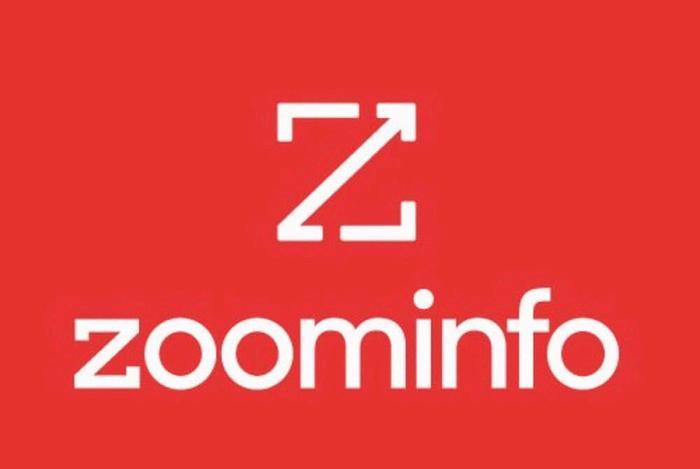
Click the button to check out a comprehensive LinkedIn sales prospecting guide
Click the button to check out a comprehensive Zoominfo guide
6. Implement & Execute
Now that your marketing strategy has set the direction for how you’ll find and engage with prospects, you can funnel them through the s process to identify and refine your c prospect list.

Develop a standardized plan that varies your outreach method, which includes the following touchpoints/tools:
Automated email sequences with proven brand messaging (marketing automation)
LinkedIn InMail/Connections/Messages
Initial contact through Vonage (our softphone)
Follow up calls with emails
REMEMBER: 80% of sales are made between the 5th and 12th contact -- create a cadence that rotates through all methods of contacts at least 12 times.
to maximize your return on efforts, keep Bullhorn fields updated and notate where you’re at in the process with adequate note actions every step of the way.
Click the button to check out the Prospect Journey resources on the Marketing Intranet page
Click the button to check out the LinkedIn Resource Guide on the Marketing Intranet page
Effective Outreach
Each call with a client should not have the same outcome. You will want to accomplish one of these 8 things in each conversation you are having. By doing so, you are expanding your relationships with clients and working to move the business forward.
For example you’ll always want to:
Develop a rapport with the contact
Validate hiring pain points and needs
Offer insights and information relevant to their market or industry to position yourself as an informed advisor
End the call with a plan for next steps to show your proactivity and sense of urgency
Once you've learned more about a contact, you can:
Present an MPC to a prospect
Ask about existing or upcoming openings or seasonal needs
Make a proposal to generate a contract
Obtain referrals
Click the button to check out an article on how to update your LinkedIn profile as a BDM
Click the button to check out this podcast on How to use LinkedIn for Business Dev
Social Selling
Establishing your profiles visible to prospects, talent, and peers as a thought leader, is so crucial to cast a wide net. You can leverage the blogs in the Marketing Toolkit, re-post company page posts or come up with your own!
Click the button to check out several blogs on Thought Leadership in the Marketing Toolkit
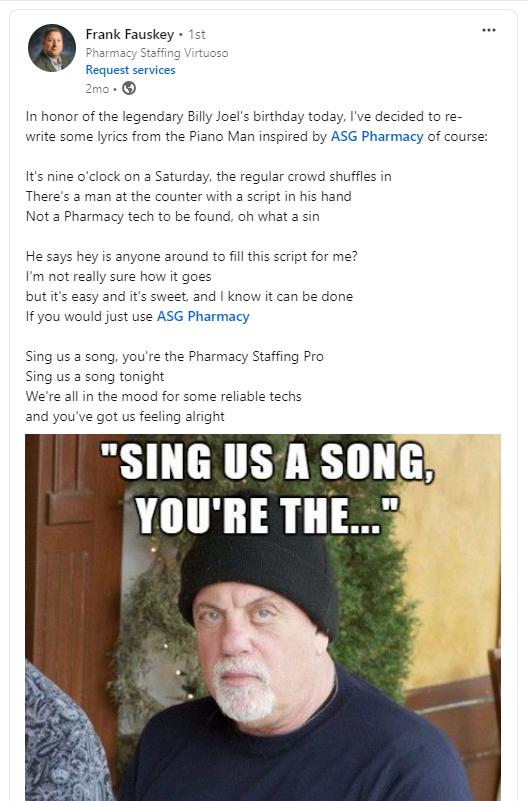

Remember to document each and every call in the Bullhorn ATS with the correct Note Action type ASAP!
That’s also a great opportunity to set a follow up task and schedule your next appointment.
If it’s not in Bullhorn, it didn’t happen...
CONSISTENCY IS WHAT TRANSFORMS AVERAGE IN TO EXCELLENCE.





S A L E S & R E L A T I O N S H I P S
Sales Techniques
Now you’re making your calls, visits, and enacting your plan or strategy. Now you need some techniques to employ on your calls.
Introduction & Engagement
Prepare: Research the client and their industry. Know their challenges and how your services can help; Don’t stop there! Use tools linked later in this section to prep for your Initial Client Visits after you’ve hooked your prospects.
Introduce Yourself: Clearly state your name, role, and the company you represent.
Personal Connection: Find a common ground or interest to establish rapport.
Value Proposition: Quickly articulate the unique value your staffing services bring. Establish yourself as a provider of solutions.
Open-Ended Questions: Encourage dialogue by asking questions about their needs and challenges.
Click the button to check out the PASTA-Q Resource on the Flight Deck: Sales page; This is a great tool to discover ‘The Why’
Click the button to check out the TL Sales Objections & Responses Resources on the Flight Deck: Sales page; Have your response ready!
Additional Tips for Effective Sales
Follow-Up: Consistent and timely follow-up can make a difference. Use personalized emails or calls to keep the conversation going
Leverage Technology: Use CRM tools to manage leads and track interactions. Automate routine tasks to focus more on building relationships.
Stay Informed: Keep up with industry trends and changes. This knowledge positions you as a trusted advisor
Build Relationships: Focus on building long-term relationships rather than just closing a sale. Lead with giving before taking; How can you help your prospect? This can lead to repeat business and referrals.
Be Authentic: Authenticity builds trust Be honest about what you can and cannot do.

These are the best items in Bullhorn to help strengthen your followup and rise above your peers -- and more importantly, your competition. Learn them first & foremost!

Here’s a view of the Task List in Bullhorn -- it’s a great way to manage the volume of leads you’ll need to manage in order to grow your market.
Initial Client Visits
Now that you’ve secured your meeting, it's time to leverage our resources and tools to make a lasting impression. These tools are designed to complement your personal style, ensuring a professional and thoughtful representation during your initial virtual calls or visits:
ICV Pitch Deck: Utilize this to effectively present our value proposition and demonstrate how our services can address their specific challenges.
MPC Slides: Include a couple of Most Placeable Candidate (MPC) slides that highlight talent matching the client’s requirements, showcasing our ability to deliver top-notch candidates
Bullhorn Automation: Post-visit, ensure you properly set fields in Bullhorn for automated follow-ups and jobmatching for future opportunities.
Needs Analysis: To capture the specific needs and ensure a thorough first visit with your client; The worksheet is a helpful aid in getting to know them.
By utilizing these resources, you can transform the process into an efficient and powerful relationshipbuilding experience.
Click the button to check out the Marketing page on the Intranet for MPC Templates to take on all of your calls (Marketing Resources Folder) & for sales presentations/other branded collateral (Marketing Toolkits)
Click the button to check out the Needs Analysis for ICVs in your brand’s Google Template Gallery to bring a copy along with you on your visit.
Client Relationships
Establishing Trust & Credibility
Through your thorough preparation, in listening to Client pain points, and through asking open-ended questions to allow your Client Contacts to speak to you, you’re already starting to build your business relationships Simply by knowing your business and acting as a staffing partner and consultant (even taking notes on clients’ interestes, family, etc.), you’re in it with your client and trust will follow your

Regular Communication & Follow
Ups
That being said, ensure that you’re always assigning yourself Tasks or Scheduling follow ups in Bullhorn, which get added to your Google Calendar automatically.
Live by your Google Calendar: When you’re on the road or away from your desk, you can track your follow ups and appointments at your fingertips; Perfect for when delays happen and you might need to reschedule a call before you miss it.
Leverage your Bullhorn Planner: When you’re at your desk, your Bullhorn Planner will have a copy of every appointment you’ve scheduled for yourself, with the Client Contact and all relevant information linked to it.
Needs Assessment
Conducting a Needs Assessment worksheet during an initial client visit is crucial for several reasons.
1.
First, it allows us to gain a comprehensive understanding of the client's unique challenges, goals, and requirements. This tailored approach ensures that we can align our staffing solutions precisely with their needs, demonstrating our commitment to delivering value.
2. It also positions us as thorough and professional, building trust and credibility from the outset.
Moreover, the worksheet serves as a structured framework for the conversation, helping to uncover insights that might not be immediately obvious.
3. By identifying key pain points and opportunities early on, we can craft a more effective, customized strategy, ultimately fostering a stronger, more productive client relationship.

Click the button to check out the Needs Analysis for ICVs in your brand’s Google Template Gallery to bring a copy along with you on your visit.

Once you have your ICV scheduled, you will want to print out, or bring along a digital copy of your brand’s Needs Analysis worksheet to your appointment.
The 8 Steps





P R E S E N T A T I O N
P R O P O S A L &
Effective Proposals
It is essential to thoroughly consider solutions before proposing them to the client to ensure that our recommendations are both relevant and effective.
Presenting well-thought-out solutions showcases our expertise and professionalism, building trust and establishing us as a reliable partner. Ultimately, this approach leads to more successful outcomes and stronger, long-term client relationships.
Temporary or Temp-to-Hire
The Client company hires Talent from an OC on a contract or contract-to-hire basis. The brand is the employer of record and bills the company a bill rate per hour worked by the Talent
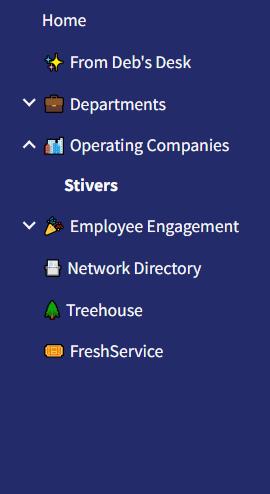
Direct Hire & Conversion Fees
The Client company hires Talent directly from your OC or converts them after being on a temporary assignment and a fee is due.
Your OC may offer more solutions (ie, Quick Hire, Onsite, & Workforce Engagement Manager) for volume hiring. Ask your leader or check your OC’s Intranet page to discover more.
Master Service Agreements (MSAs)
The Master Service Agreement (MSA) is a critical document that outlines the terms and conditions of your service relationship with the client Please keep in mind:
Standardization: Our MSAs are standardized across all brands and are accessible in the Google Template Gallery This ensures consistency and compliance with our legal requirements.
Presentation: During the initial meeting, present the MSA to the client. Walk them through the key sections, highlighting important clauses related to scope of work, payment terms, confidentiality, and termination.
Customization: While the MSA is standardized, be open to minor customizations that may be necessary to meet specific client needs. However, any changes should be reviewed and approved by our legal team.
By following the steps as outlined on our Legal Intranet page, you can ensure a smooth and professional onboarding experience for new clients, and protect the company from future potential risk, by setting the stage for a successful partnership.


Presentation Skills
Effective presentation skills are essential for making a compelling case to clients and showcasing your solutions confidently
Sales Pitch Deck
These are perfect to bring to your prospect sales calls
Prepare them ahead of time with information tailored to your prospect’s needs/industry/circumstances
Quarterly Business Review (QBR)
Crafted to display all the information and results that your Clients will care about, and ways in which you can portray your effectiveness in your relationship over the last several months
Generic Presentation Template
Need to present anything additional? A one-off meeting for which you’d like to prep? This is on brand by color and text and will help you bring that polish.
Click the button to check out Branded Marketing resources on the Marketing Intranet page for your Brand’s Sales Pitch deck

Visual and Verbal Communication
Visuals: Use visuals effectively Ensure slides are not overcrowded with text; use images, graphs, and charts to illustrate key points.
Clarity and Conciseness: Speak clearly and concisely Avoid jargon and complex language. Aim to convey your message in a straightforward manner.
Body Language: Maintain positive body language Make eye contact, use hand gestures to emphasize points, and stand confidently.
Stay Calm: Maintain composure if faced with difficult questions. Take a moment to think before responding, and if you don’t have an immediate answer, assure the client you will follow up promptly
Practicing and Refining
Rehearsal: Practice your presentation multiple times Rehearse in front of colleagues or mentors to get feedback and refine your delivery.
Timing: Be mindful of time Ensure your presentation fits within the allocated time slot, allowing some room for discussion and questions.
Continuous Improvement: After each presentation, review what went well and what could be improved. Use this feedback to enhance future presentations.
By incorporating these presentation skills, you can complement the marketing team's pitch decks and deliver persuasive, engaging, and professional presentations that resonate with your clients.

Pricing
Temporary & Temp-to-Hire Pricing
Bill Rate - The hourly rate your OC charges the Client for Talent working on assignment
Pay Rate - The hourly rate your OC pays Talent on assignment
Burden Rate - The cost of employing Talent on assignment. This includes federal, state, and local taxes, worker’s compensation, and unemployment insurance; Rates differ based on skill set and state
Mark Up - The amount your OC adds to a pay rate to determine the bill rate charged to Client; Always shown as a percentage.
Loaded Payroll Cost - Pay rate plus burden costs
Gross Margin - Determined by taking the bill rate and subtracting the loaded payroll cost
Bill Rate / Hour
Calculate Margin Percentage
Payroll services
Sign our standard MSA; No conversion fees for payrollees
Establish mark up with Client by brand guidelines
Pay rate to Talent provided by Client
Pay rate x Mark up = Bill Rate
Direct Hire Pricing
Our standard fee is 25% of the Talent’s first year base salary
Example:
$50,000 x .25 = $12,500 (base salary)
If the Talent is an hourly full time employee, use the hourly rate paid to Talent multiplied by hours worked in a year to find the base salary.
$20hourlyx2080(annual hours worked for full time employee) =$41,600
Example:
$20 x 2080 = $41,600 (hourly) (annual hours worked for full time employee) (base salary)
If the Talent is a part time hourly employee, to determine the base salary supplementing the true hours to be worked annually based on their annual schedule. (standard fee) (billed to customer)
Anystandardguarantee& replacementsareOC-specific, sopleaseaskyourleader!

$50,000 x .15 = $7,500
Example: (base salary) (discounted by hours worked) (client billed)
For hourly employees, to determine base salary the same calculation applies per direct hire (see previous page)
There is NO guarantee with a conversion fee




N E G O T I A T I O N & C L O S I N G D E A L S
Techniques
How to Identify Client Concerns
Identifying Client concerns is a critical step in the sales process, as it allows us to address potential issues proactively and tailor our solutions effectively.
Start by asking open-ended questions that encourage the client to share their experiences and challenges.
Active listening is key pay attention not only to what is said but also to how it is said, noting any hesitation or emphasis.
Use reflective listening techniques to paraphrase their concerns, ensuring you fully understand their perspective.
Reviewing previous interactions and feedback can also provide valuable insights into recurring issues or concerns.
Once concerns are identified, focus on finding mutually beneficial solutions that address the client's needs while aligning with our capabilities and goals.
By fostering a collaborative approach, we can develop strategies that deliver value to both parties, enhancing client satisfaction and building stronger, long-term relationships.
Negotiation Techniques to Address Client Concerns
Focus on Interests, Not Positions: Identify the underlying interests behind the client's demands. Addressing these interests can lead to more creative and acceptable solutions for both parties.
Offer Multiple Options: Present a range of solutions or alternatives This demonstrates flexibility and can help the client feel more in control of the decision-making process.
Use Objective Criteria: Base your arguments on objective data, such as market rates, industry standards, or company policies This helps in making the negotiation more factbased and less emotional.
Seek Win-Win Outcomes: Aim for solutions that benefit both parties Highlight how your proposal can meet the client's needs while also serving your business interests.
Be Patient and Persistent: Negotiations can take time. Be patient and persistent, and avoid rushing the process. Give the client time to consider your proposals and be prepared for multiple rounds of discussion.
Know When to Walk Away: Recognize when a deal is not in your best interest Be prepared to walk away if the terms do not meet your minimum requirements or if the client's demands are unreasonable.
By employing these negotiation techniques, you can effectively address client concerns and work towards solutions that are satisfactory for both parties, ultimately fostering a stronger, more collaborative relationship.
Closing Strategies
Successfully closing a deal is a critical part of the sales process. Here are some key strategies to ensure a smooth and effective closing.
Recognizing Buying Signals
Buying signals are cues that indicate a client is ready to make a decision. Being able to identify these signals can help you move the conversation towards a close confidently.
1. Questions About Implementation: When clients begin asking detailed questions about how your service will be implemented, it's a strong indication of interest.
Verbal Cues: Listen for statements that show interest or intent, such as "How soon can we start?" or "What are the next steps?"
2. Positive Feedback: Statements like "This sounds exactly like what we need" or "I like the way this addresses our concerns" are clear signs they are leaning towards a decision.
3. Trial Closes: If you suggest a small next step, such as scheduling a follow-up meeting or a product demonstration, and the client agrees easily, it's a good sign they are ready to move forward.
5
4. Behavioral Cues: In a virtual setting, these might include clients spending more time reviewing materials you’ve shared or consistently attending meetings and asking for follow-up information
Securing Commitments
Once you've recognized buying signals, the next step is to secure a commitment. Here are some effective strategies:
Assume the Sale: Act as if the client has already decided to go ahead Use phrases like "When we start" or "Once we begin"
Direct Close: Simply ask for the business. For example, "Are you ready to move forward with this solution?"
Summary Close: Recap the key benefits and agreed-upon points For instance, "So, we've agreed that our solution addresses your main concerns about cost and efficiency Can we proceed with the contract?"
Alternative Close: Give the client a choice between two options, both of which lead to a sale. For example, "Would you prefer the standard package or the premium package?"
Urgency Close: Create a sense of urgency by highlighting timesensitive aspects. For example, "Our current promotion ends this week; would you like to take advantage of it?"
Conditional Close: Ask the client what conditions need to be met for them to make a decision. For instance, "What would it take for you to feel comfortable moving forward today?"
Next Steps: Clearly outline the next steps and get the client's agreement to proceed For example, "Shall we schedule a kickoff meeting for next Monday?"
By recognizing buying signals and using these strategies to secure commitments, you can effectively close deals and ensure a smooth transition from prospect to client.




S E R V I C E D E L I V E R Y & H A N D O F F
Onboarding Clients
Effective onboarding of new clients sets the foundation for a successful and lasting partnership Here’s how to navigate the initial stages of the onboarding process:
Initial Meeting and Expectation Setting
The initial meeting with a new client is crucial for setting the tone of your working relationship and establishing clear expectations. Here are the key steps to ensure a productive first meeting:
Preparation: Before the meeting, review all relevant information about the client, including their needs, goals, and any previous interactions Bring all necessary documents and materials.
Engage Client Manager: Bring along the Client Manager once the MSA is signed to begin building the Client-CM relationship immediately.
Introductions: Introduce your team members and their roles. Ensure the client understands who their primary points of contact will be
Expectation Setting: Discuss timelines, deliverables, communication preferences, and key milestones. Make sure both parties have a clear understanding of responsibilities and expectations.
Open Communication: Encourage the client to ask questions and express any concerns they might have. This is also a good time to reiterate your commitment to addressing their needs effectively.
Next Steps: Conclude the meeting by summarizing the key points discussed and outlining the next steps Schedule followup meetings or calls as needed.
Safety Assessments
Ensure that a Safety Assessment is filled out thoroughly using the most recent instructions to further mitigate harm to working Talent and Client employees, and the TL Network from risk
W9 Folder
To provide the Client / for confirmation
Click here to view the Safety Intranet page to locate your CSV Template & instructions in the Resources
Click here to view the W9 Folder
Make it Official:
Upload ALL documents to the Client’s File tab in Bullhorn!
Create the Client’s FIRST Job Order in Bullhorn!


A+ Service Delivery
Hand Off to the Client Ma

Once the Client is successfully signed, onboarded, and all documents/information are in place in Bullhorn, you should have already introduced them to the Client Manager who will act as point of contact for their business needs going forward. Here are some bonus tips to be a great business partner and team mate:
Knowledge Transfer: Provide the Client Manager with all relevant information about the Client and the requested Job orders, ideal Candidates, including any feedback or concerns raised during the initial stages.
Ongoing Communication: Ensure a smooth transition by maintaining open communication lines. The Client Manager should regularly update you on the Client’s status and any new developments This should regularly occur in the Daily Goals Meetings (DGMs)
Continuous Improvement: Encourage the Client Manager to seek feedback from the client and candidates continuously. Use this feedback to improve service delivery and address any issues promptly.
Ensuring Candidate Satisfaction and Retention
Happy candidates are more likely to stay and perform well, benefiting both the client and your firm. Though it won’t be your role to carry out many of these tasks, it’s crucial that you have an understanding of the entire process in case Clients ask, or in case Clients provide you with insight along the way that could help your team fulfill better or faster:
Onboarding Support: The team provides candidates with clear instructions and support during their onboarding process with the Client. This helps Talent settle in quickly and effectively
Regular Check-Ins: Conduct regular check-ins with placed candidates to address any concerns or issues they might have. This shows your commitment to their success and well-being.
Feedback Collection: The team will encourage candidates to provide feedback on their Client interviews and Talent Working with feedback on their placement and work environment. Seek this feedback if not proactively provided to you in Daily Goal Meetings (DGMs). Use this information to make improvements and address any potential problems early with future Clients.

Continuous Improvement
This is your opportunity to grow professionally as much as it is to grow a book of business for a given Practice Area!
Leverage all that you’ve learned, come back to your resources early & often in your first 6 months -- there will be plenty of details you’ll uncover with each reading.
Use your PowerBI reports and evaluate and analyze your KPIs with your leader -- use the “Drill Through” function everywhere you can, see what additional knowledge your supervisor can impart from their experience.
Seek feedback on how newer Clients are faring with the rest of the team; Ask about new Talent Working, and never hesitate to reach out to Clients you’ve signed once in a while to check in if you built a strong connection.
Remember: Your team couldn’t place Talent without all of the new Clients and Job Orders you’re bringing to the table, and you wouldn’t have anyone to fulfill your ever-expanding book of business without an amazing team for support -- you have the know ledge and the ability, and it’s all finetuning from there!





A P P E N D I C E S
Templates & Forms
Official forms are all featured in the Google Template Gallery:

All Templates should be kept within Bullhorn You can use other colleagues’ shared templates as well (just keep your personal templates private if not sharing) Here you can find Note Action Type Templates, such as for your ICV
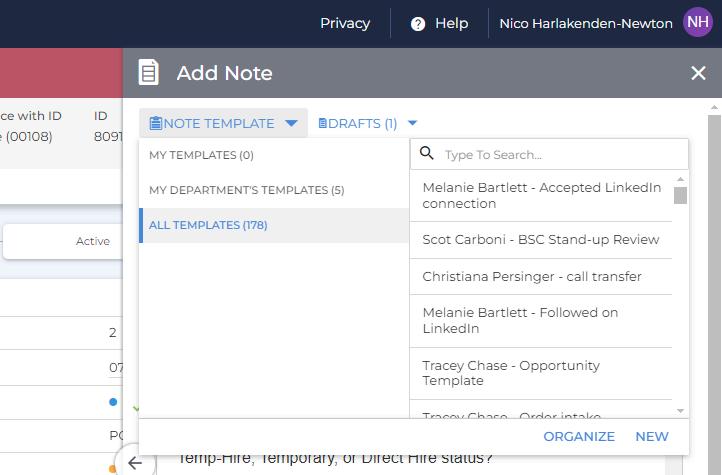
And in the bottom right corner of the drop down menu you can see how to organize your old or create new templates Templates serve to save you time, and swiveling to other software to store templates usually results in loss of efficiency and loss of your own time
Templates & Forms
It is best practice to do the same for all messages (email & sms) for the same reasons.

These are great for different touch points or thought pieces relevant to Sales prospects, client contacts, and leads, as well as for Talent touchpoints, assignment sheets, onboarding and pre-employment screening notification, tour location and times, and more




G L O S S A R Y
Bullhorn Definition Sheets
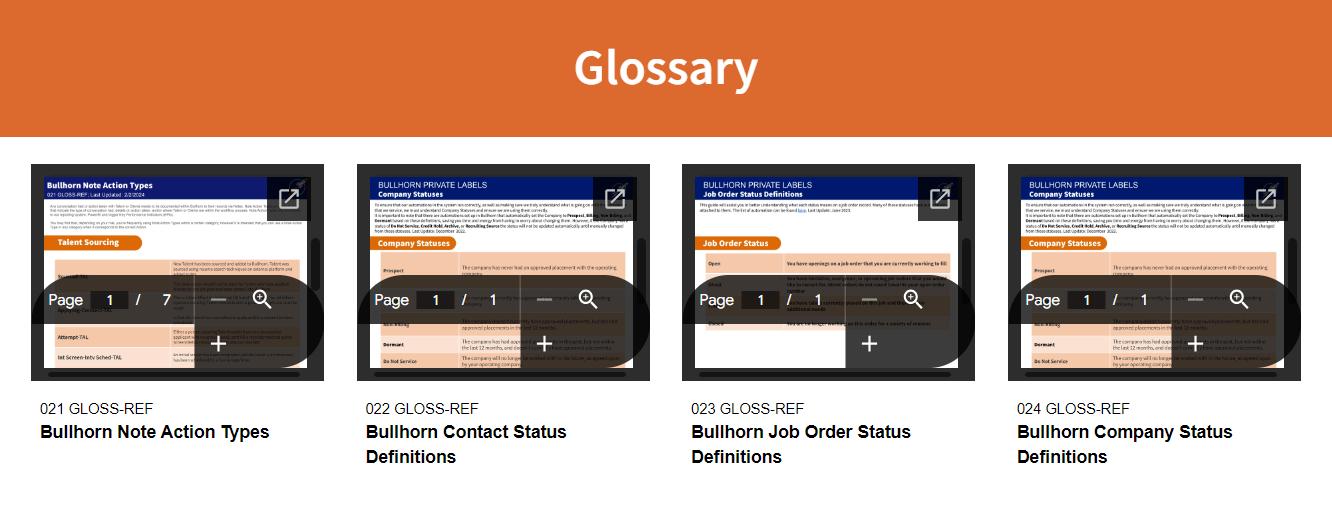
Please check out our most updated Bullhorn definitions in the Glossary documents on the Flight Deck -- if you use the page for any future references, you’ll always be sure to be operating off of the most recent definitions.
Bullhorn Action Types: Notes
Bullhorn Action Types: Placement End
Bullhorn Status Definitions: Company
Bullhorn Status Definitions: Contact Records
Bullhorn Status Definitions: Job Order
Bullhorn Status Definitions: Shortlist
Bullhorn Status Definitions: Talent Availability
And coming soon: Required Fields Guides!


